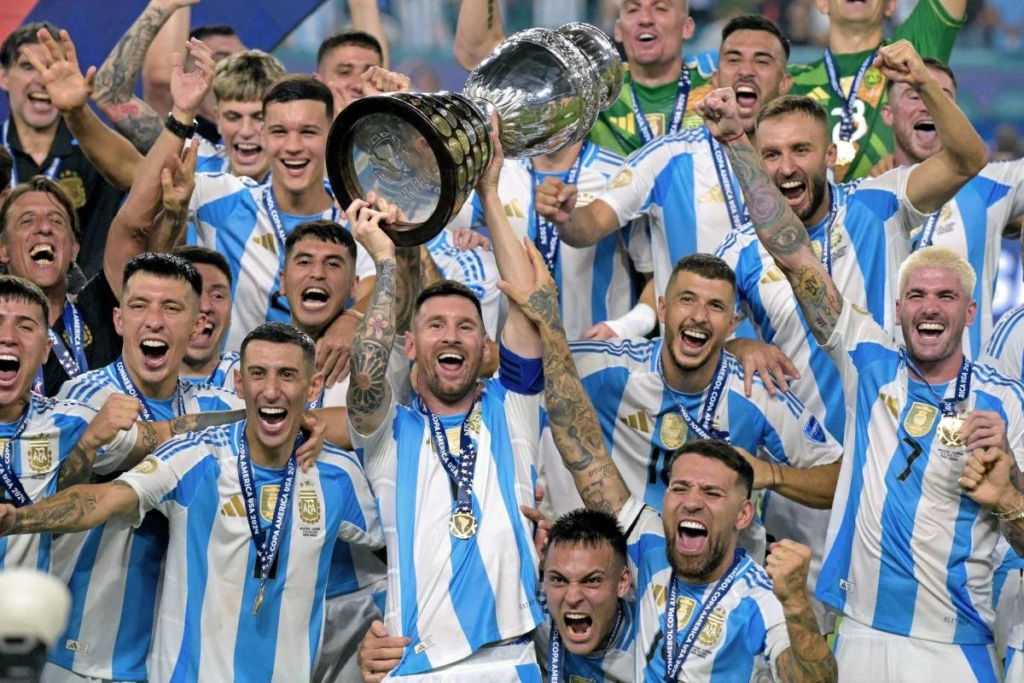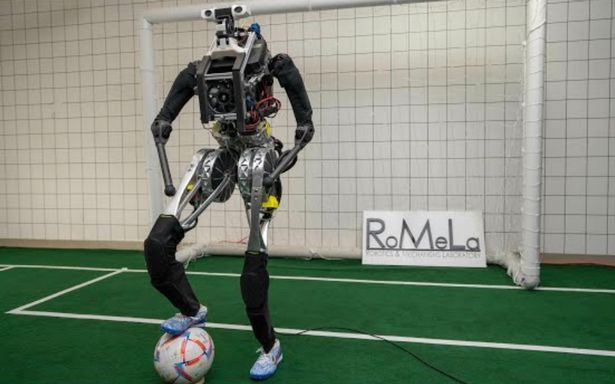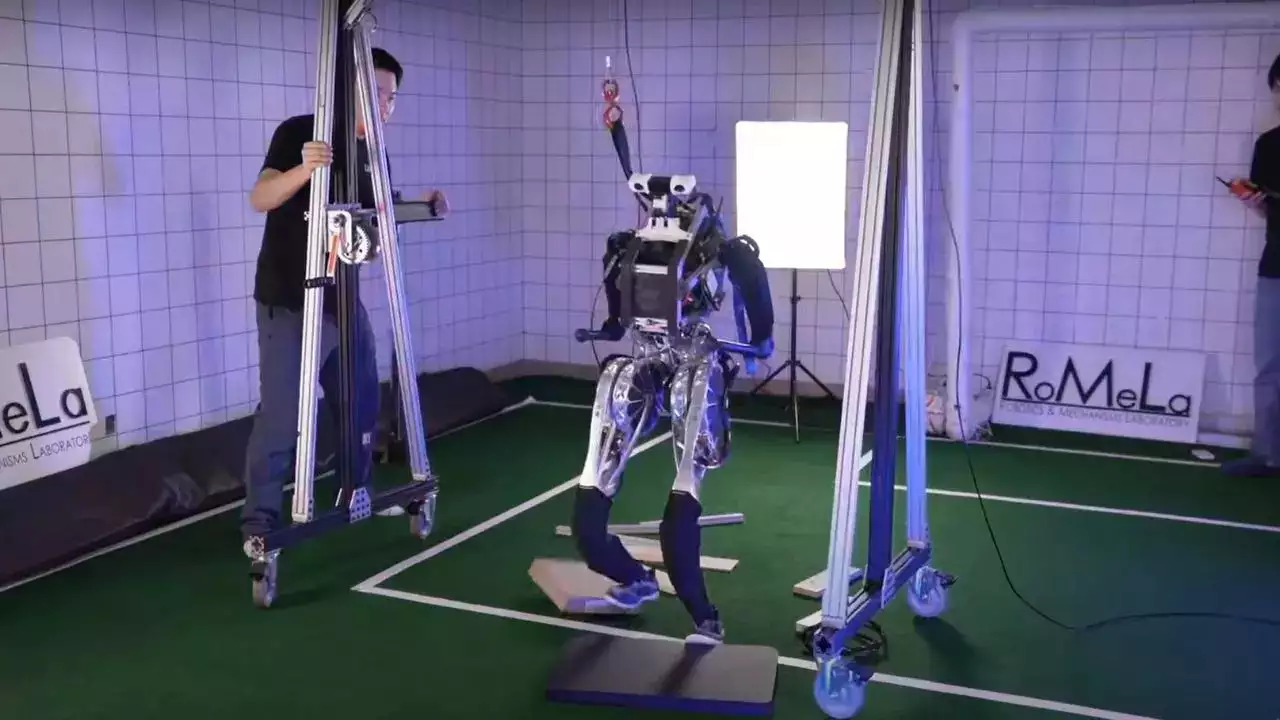In a world where technology and sports are increasingly intertwined, the idea of robots surpassing human abilities in sports might seem like something out of a science fiction movie.
However, this vision is slowly becoming a reality, and one of the most intriguing developments is the creation of a robot designed to potentially outplay one of the greatest footballers in history: Lionel Messi. Scientists at the University of California, Los Angeles (UCLA), are working tirelessly to develop a humanoid robot that could not only rival Messi but also redefine the future of football.
This groundbreaking project, called ARTEMIS (Advanced Robotic Technology for Enhanced Mobility and Improved Stability), aims to push the boundaries of robotics and sport, with an ambitious goal of having this robot play in the FIFA World Cup by 2050.
The Rise of ARTEMIS: A Robot with Messi’s Potential
The world of football has long been dominated by players who have achieved legendary status, and Lionel Messi is undoubtedly one of them. The Argentine forward has mesmerized fans with his extraordinary skills, vision, and ability to perform under pressure. His eight Ballon d’Or awards speak volumes about his talent and consistency.
Messi’s recent triumph, winning the FIFA World Cup in 2022, added another feather to his cap and cemented his legacy as one of the greatest footballers of all time.
But now, the realm of football is on the brink of a revolution that could see a robot as good as or even better than Messi playing on the world’s biggest stage. UCLA’s ARTEMIS is designed to be a humanoid robot capable of performing complex movements, and it boasts features that suggest it might have a significant advantage on the football field.
Read : Ronaldo Is a Monster, Messi Is Father of the Monster: Guardiola on Ballon d’Or
One of its standout attributes is its walking speed. ARTEMIS can walk at 2.1 meters per second, a pace that could be devastating for any defender facing it. This walking speed, coupled with its agility and enhanced mobility, makes ARTEMIS a serious contender to revolutionize the sport.
Read : Forbes’ Top 10 Highest-Paid Athletes for 2024
UCLA researchers claim that ARTEMIS is the world’s fastest walking humanoid robot and that it is the first humanoid robot designed in an academic setting that is capable of running.
These accomplishments have already made waves in the robotics community, and ARTEMIS’s potential to exceed Messi’s abilities on the football pitch is fueling a growing excitement about its future prospects.

The connection to Messi is not just symbolic but is embedded in the robot’s very design. The researchers at UCLA have made it clear that their goal is to create a robot that is not only functional but also capable of performing at a level that rivals the talent of Messi himself.
While ARTEMIS may not yet have Messi’s finesse in dribbling or shooting, its raw physical capabilities could give it an edge in other areas of the game, such as speed and stability.
ARTEMIS in the RoboCup: A Glimpse into the Future
Before ARTEMIS can even think about stepping onto the grand stage of the FIFA World Cup, the robot will first compete in the RoboCup, an international autonomous robot soccer competition. This competition has been running for decades and has seen robots competing in various leagues, from small humanoid robots to more complex machines.
The RoboCup’s mission is to promote robotics research and innovation, and it has served as a testing ground for many of the advancements that are now entering the field of robotics and artificial intelligence.
In 2023, ARTEMIS made its debut in the RoboCup, showcasing its remarkable agility and speed. While the competition is still far from the level of the FIFA World Cup, it provides the ideal setting for researchers to test the robot’s skills in a game-like environment. It also allows them to refine ARTEMIS’s capabilities before taking on the ultimate challenge of representing a country at the FIFA World Cup.
The RoboCup is not just a testing ground for ARTEMIS; it’s also an important step in the broader goal of integrating robotics into the world of football.

As the technology improves and ARTEMIS becomes more adept at playing the game, the idea of autonomous robots competing against human players in professional leagues could become a reality. The technology behind ARTEMIS could change the dynamics of football in ways we are only beginning to understand.
The Vision for 2050: Robots in the FIFA World Cup
While ARTEMIS’s performance in the RoboCup is impressive, the ultimate goal for this robotic marvel is much more ambitious. Researchers at UCLA have set their sights on a monumental goal: to see ARTEMIS play in the FIFA World Cup by 2050. This would mark a significant milestone in both the fields of robotics and sports, as the idea of robots competing at the highest level of human football has never been considered a serious possibility—until now.
The vision of a robot playing in the FIFA World Cup raises many questions. How would the robot integrate into the current structure of the tournament? Would it compete on a team with human players, or would it play as part of a fully autonomous robot team?
The possibilities are endless, but what is certain is that the integration of robots into the world of professional sports will require significant changes to the way the game is played, governed, and enjoyed.
The prospect of robots like ARTEMIS playing in the World Cup could also pave the way for other technological advancements. As robots continue to evolve and improve, they could potentially introduce new strategies and playing styles that human players may never have considered.
This could lead to a more dynamic and unpredictable style of football, which could captivate audiences and transform the way the sport is watched and played.
The End of Messi’s Era? The Future of Football
As the research into ARTEMIS continues to progress, many are left wondering what the future holds for human players like Lionel Messi. In an interview with renowned football journalist Fabrizio Romano, Messi stated that he is unsure whether he will participate in the 2026 FIFA World Cup.
The 2022 World Cup marked the culmination of his illustrious international career, but with age catching up to him, Messi’s future in the sport is uncertain.

Could robots like ARTEMIS eventually replace human players in the World Cup? While this might seem far-fetched now, the pace at which robotics technology is advancing suggests that it may not be too long before machines can compete with humans in a variety of sports.
However, despite the incredible potential of robots, there will always be a place for human athletes in football, if not for their skill and artistry, then for their emotional connection to the game.
Messi’s legacy is secure, regardless of what happens in the future. His achievements on the field will continue to inspire future generations of players, whether human or robotic. However, as technology advances and robots like ARTEMIS improve, we may witness a new era in football—one where humans and machines coexist and push the limits of what is possible in the sport.
The development of ARTEMIS and its potential to surpass Messi in football is a glimpse into the future of the sport. The creation of robots with such extraordinary capabilities opens up new possibilities for the way football is played, viewed, and appreciated.
As technology continues to evolve, the idea of robots competing in the FIFA World Cup by 2050 is becoming more realistic, and it may change the sport forever.
For now, ARTEMIS’s journey through the RoboCup and its ultimate goal of playing in the World Cup remains a bold and ambitious vision. Whether or not robots like ARTEMIS will ever replace human players in the world’s most popular sport remains to be seen, but one thing is certain: the intersection of robotics and football is just beginning, and it promises to bring some truly revolutionary changes to the game.

